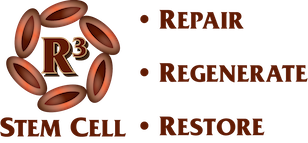Request an Appointment Today and see if you are a candidate for a regenerative procedure
to achieve relief and AVOID surgery!

PRP Therapy
FAQs on PRP Therapy
Platelet-rich plasma (PRP) therapy is an innovative, non-surgical approach to healing various musculoskeletal problems and injuries. PRP therapy has been used in many fields of medicine for more than two decades. One of the roles of platelets is the release of growth factors, which speed up wound and soft tissue healing. With PRP therapy, the doctor injects concentrated platelets directly into an injured or damaged body site.
What is PRP?
Platelets are the smallest blood cells that circulate in the blood. These cells bind together when aa blood vessel is damaged, causing a blood clot. Platelet-rich plasma is composed of the liquid component of the blood (plasma) that contains red and white blood cells and platelets. When PRP is processed in the laboratory, the platelet concentration is multiplied 4 times as that of normal blood, which explains the term “platelet-rich.”
What conditions are treated with PRP therapy?
Currently, PRP is used for treating tendinopathies and degenerative disorders. These conditions result as a consequence of a viscous injury cycle, which involves abnormal scarring, reinjury, and degeneration. These include:
- Medial epicondylitis (Golfer’s elbow)
- Lateral epicondylitis (Tennis elbow)
- Achilles tendinitis
- Patellar tendinitis (Jumper’s knee)
- Plantar fasciitis
- Rotator cuff tears
- Joint pain due to osteoarthritis
How does the doctor decide if PRP therapy is right for me?
After an initial evaluation with the pain management specialist or orthopedic surgeon, the doctor will review your medical history and perform a physical examination. Additional tests may be ordered to assess your injury or condition, such as a magnetic resonance imaging scan, computed tomography scan, and/or x-rays. Patients who have failed on traditional treatments are considered for PRP therapy.
How does the PRP therapy process work?
A nurse will draw a small sample of your blood, which is processed in the laboratory. The blood is centrifuged (spun) to separate the platelets from other blood components. After the platelet-rich solution is created, the PRP is injected into the body region that is injured or damaged. The doctor first cleans the skin using an antiseptic solution. The area is numbed using a local anesthetic. To assure correct needle placement, a fluoroscopic device is used to insert the needle. After the PRP solution is injected, the needle is removed, and a bandage is applied.
What results can I expect after PRP injections?
The goal of PRP therapy is to heal chronic tendinosis or damaged tissues without surgery. According to a recent clinical study, more than 90% of patients with Tennis elbow reported they were “completely satisfied” with PRP treatment and were able to avoid surgery. While PRP injections do not offer instant pain relief or tissue regeneration, the stage is set for a cascade of healing that occurs over the next 2-6 weeks.
What happens after the procedure?
Once the local anesthetic wears off (1-2 hours), soreness at the injection site is common. If the lower extremity is injected, you may need to use crutches for a few days. Physical therapy will help strengthen the muscles and increase mobility. It usually takes 3 injections to receive full benefits, which gradually occur.
What is the success rate of PRP?
The success rate for PRP therapy varies, depending on the health status of the patient, the patient’s age, the condition being treated, and the treatment protocol. In a recent study involving patients with lateral epicondylitis, success rates were reported at 90%. Another study involving patients with Achilles tendonitis found an 80% efficacy rate.
Resources
Hechtmann KS, Uribe JW, Botto-van Demden A, & Kiebzak GM (2011). Platelet-rich plasma injection reduces pain in patients with recalcitrant epicondylitis. Orthopedics, 34(2), 92.
Martin JI, Merino J, Atilano L, et al. (2013). Platelet-rich plasma (PRP) in chronic epicondylitis: study protocol for a randomized controlled trial. Trials, 14, 410.
